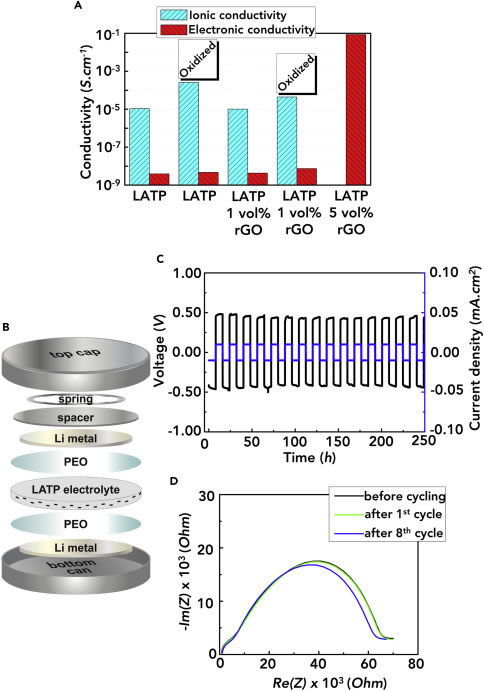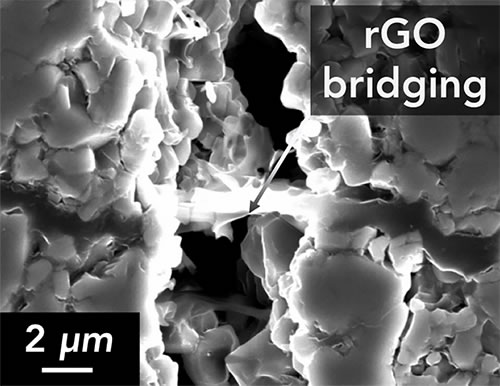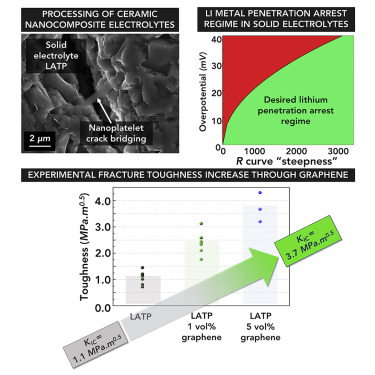Although the idea of ​​using solid electrolytes to replace liquid electrolytes in lithium batteries has been accepted by many people, there are still many difficulties to overcome before this technology is put into practical use. The good news is that a research team at Brown University has produced the toughest solid electrolyte to date by incorporating a fine mixture of ceramics and graphene. As a solution that carries lithium ions back and forth between the anode and cathode during battery charging and discharging, liquid electrolytes play an important role in today's lithium-ion batteries. However, these highly volatile liquids also have the risk of causing fire when the battery is short-circuited, so there is still much room for improvement in safety. In addition, replacing the electrolyte also helps to increase the energy density of the battery and even upgrade other components of the battery. A recent study pointed out that anodes are usually made of copper and graphite, but scientists believe that solid electrolytes can work with pure lithium anodes to break the "energy density bottleneck." Unfortunately, this work is not simple, the current problem is mainly reflected in the other parts of the battery may be cracked and corroded. Although the ceramic is durable enough, its physical properties are too brittle. In view of this, the Brown University research team considered adding a small amount of graphene to it. But as a wonderful material that is both strong and lightweight, it also has a very high electrical conductivity, so these properties must be used with caution. Research author Nitin Padture said: We want electrolytes to transfer ions, not conduct electricity. Graphene is a good conductor, so people may think we put a conductor in the conductor. But if we can keep the concentration low enough, we can prevent graphene from conducting electricity while still enjoying its structural properties. It is reported that the research team mixed a certain amount of fine graphene oxide (rGo) flakes with ceramic powder, and then heated the mixture to form a ceramic-graphene composite material. Through testing, the team proved that the toughness of ceramic alone can be increased by two times, and graphene will not interfere with other electrical properties of this electrolyte material. Athanasiou said: When cracks appear in the material, the graphene flakes can actually hold the broken surfaces together, so it takes more energy to tear them apart. As the strongest man-made solid electrolyte to date, we hope that through further research, it will be put into daily use equipment. Details of this research have been published in the recently published "Materials" journal.
Polycarbonate Abrasion Resistant Sheet
Abrasion resistant coating
High transparency and UV-Protection Abrasion Resistant Sheet Abrasion Resistant Sheet,Abrasion Resistant Plastic Sheets,Abrasion Resistant Polycarbonate Sheet,Abrasion Resistant Polycarbonate Solid Sheet Suzhou Demine Plastic Co.,Ltd , https://www.demineplastics.com
Electrochemical properties of ATP/rGO nanocomposites (from: Science Direct) 
rGo helps prevent the cracking of ceramic materials in batteries (picture from: Brown University) 
Demo maps: performance improvements
Light Weight and Impact Strength
Inhibiting Condensation and Thermal Insulation
Sound Insulation and Flame Resistance
Easy Installation and Environmental Friendly
Roof light for office building, department stores, hotels, villas, stadiums, schools, amusement centers, hospitals etc.
Robbery counters in banks, jewelry counters and police Anti-riot shields, Safety roof light for airports and plants.
Safety roof light for airports and plants.
Sign boards for advertisement, Sky-lighting cover.
Housing glasses, indoor partitions, sidewalk, sight window, sunshade, terraces and shower doors.